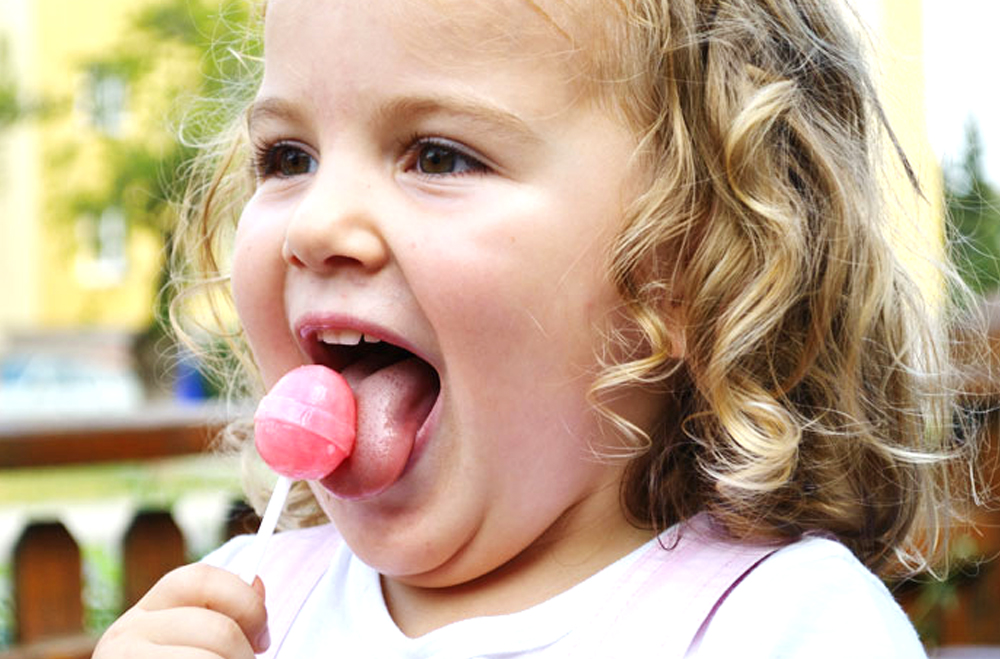Cakes, sweets and chocolates are what many children look forward to before Christmas and other holidays. However, this greater availability of treats often means a drastically increased sugar intake — not good news for little teeth or children’s health in general.
To help you keep an eye on this while you’re having fun, the following guide by Dietitian Jacyln Reutens of Aptima Nutrition & Sports Consultants offers some handy factual advice, while also considering some healthy alternatives.
How much sugar should a child consume in a day?
Please see the recommended sugar limits from the Health Promotion Board.
| Age | Recommended limit (teaspoons) |
| 6 months (181 days) –12 months | 5 |
| 1-2 years | 7 |
| 3-6 years | 9 |
| 7-18 years | 11 |
To give parents an idea of how much sugar there is in everyday food items that little ones may consume:
- One 250ml packet of sweetened drink contains five to seven teaspoons of sugar.
- One log cake has about 28 teaspoons of sugar.
- One can of cola drink contains seven teaspoons of sugar.
- Three Oreo biscuits contain two teaspoons of sugar.
- One tablespoon of regular fruit jam contains 1.5 teaspoons of sugar.
- One chocolate cupcake has four teaspoons of sugar.
As you can see, it is easy to go over the limits. If you are a five year old, one can of cola drink and some Oreo biscuits would exceed the limits.
What happens if children consume too much sugar? How do they behave and what are the side effects?
There are two main kinds of sugar: added sugar and naturally occurring sugars.
Added sugar is sucrose, the white sugar that we add to our tea and coffee, and found in cakes and cookies. This is the sugar that is most likely to cause health problems as it is considered as empty calories.
Naturally occurring sugars are fructose in fruits and some vegetables, and lactose in milk and dairy products. These foods are nutritious and should be encouraged daily in a child’s diet.
There are conflicting studies suggesting hyperactivity, namely attention deficit hyperactivity disorder (ADHD), in children who consume too much added sugar. One possible explanation why this is so is that when children consume sugar, it is quickly absorbed into their bloodstream and their energy and blood sugar levels are spiked, which leads to a burst of energy that can be mistaken for hyperactivity.
At parties where cordials, sweets, cakes and cookies are most likely to be served, the excitement and over-activeness due to the party itself can also be mistaken for hyperactivity.
Since there is no proven link between sugar and hyperactivity, it does not mean that we can freely serve sugar to our children. Excess intake of added sugar is proven to be linked to an increased risk of dental caries, obesity and diabetes in children.
What are the long-term side effects if children consume too much sugar?
Too much (added) sugar can lead to dental caries. The bacteria in the mouth feed on sugar, leading to acid production, which damages your teeth. Dental hygiene and a low sugar intake are highly important to prevent tooth decay.
Too much (added) sugar will increase calorie intake unnecessarily, which increases the risk of being overweight. Being overweight as a child is likely to lead to being overweight as an adult.
Being overweight increases the risk of childhood type 2 diabetes. The problem is compounded by always having a raised blood sugar level and high insulin levels.
What strategies can parents adopt to keep kids’ sugar levels at a safe level, especially during the festive season?
- Choose plain water and milk over fruit juice, cordials, soft drinks and other sweetened beverages. Bring their water bottle to parties.
- Encourage them to eat more vegetables and fresh fruits instead of cookies, fruit cakes and chocolate.
- Feed them a well-balanced meal at lunch and dinner, which means a serving of wholegrains, plus a lean protein and vegetables, for example, brown rice, grilled chicken and vegetables. In this way, the children are full and less likely to overeat their desserts.
- It’s all about portion control. There is no need to completely avoid sugar. Allow your child to eat bite-size portions and be a role model for them.
- Limit their frequency of sugary foods to no more than twice a day during the festive season. If they have maxed their quota for the day, they have to wait until tomorrow.
What are the festive treats that are exceptionally high in sugar? What are the alternatives?
Calories and sugar content of treats
Here is a table that shows the sugar and calorie levels of typical Christmas treats:
| No. | Food | Portion (g) | Calories (kcal) | Sugar (g) | Teaspoons of Sugar (5g) — rounded down |
| 1. | Log cake | ||||
| Christmas Yule log | 1 slice, 35g | 160 | 13.9 | 2.5 | |
| Christmas log | 2 ⅘ oz, 79g | 322 | 21 | 4 | |
| Festive Yule log | 1/8 of cake, 94g | 370 | 26 | 5 | |
| 2. | Fruit tart | ||||
| Fruit tart | 1 slice, 3oz | 130 | 8 | 1.5 | |
| Fruit tart | 1 slice, 52.4g | 120 | 5.9 | 1 | |
| 3. | Mince pies (fruit) | ||||
| Pie, mince, prepared from recipe | 1 piece (1/8 of 9in diameter) 165g | 477 | 46.7 | 9 | |
| 4. | Chocolate cake | ||||
| Rich chocolate cake, chocolate whipped icing | 79g | 280 | 25 | 5 | |
| Cake, chocolate, homemade | 1 piece, 55g | 202 | 10.7 | 2 | |
| 5. | Cranberry sauce | ||||
| Cranberry sauce, canned, sweetened | 1 tablespoon, 15g | 24 | 4.7 | 1 | |
| 6. | Gingerbread biscuit | ||||
| Keebler gingerbread men cookies, holiday | 5 cookies, 33g | 147 | 10.9 | 2 | |
| Old-fashioned gingerbread cookies | 28.4g | 100 | 10 | 2 | |
| 7. | Candy Cane | ||||
| Candy Canes | 12g | 50 | 11 | 2 | |
| Candy Canes lollipop | 1 candy cane, 15g | 59 | 9.44 | 1.5 | |
| 8. | Ice cream | ||||
| Ice cream, vanilla | 1 scoop, 50g | 114 | 10 | 2 | |
| Ice cream sundae | 118g | 300 | 39 | 7.5 | |
| 9. | Trifle | ||||
| Trifle | 1 serving, 150g | 252 | 17.33 | 3 | |
| Strawberry trifle | 1 serving, 125g | 144 | 21.6 | 4 | |
| 10. | Caramel fudge | ||||
| Chocolate box caramel fudge | 1 piece, 20g | 95 | 15 | 3 |
Healthier alternatives would be sponge cakes, fresh fruit salad, fresh fruit, plain cookies and home-made fruit smoothies. It is not necessary to avoid all desserts — it is the festive season after all. Teaching your kids about portion control is a good lifelong habit.
Jaclyn Reutens is a clinical and sports dietitian and the founder of APTIMA Nutrition & Sports Consultants, who has more than 14 years of experience in the nutrition and dietetics field.
Want more tips on adopting healthy eating habits for the family? Click here to read more.













